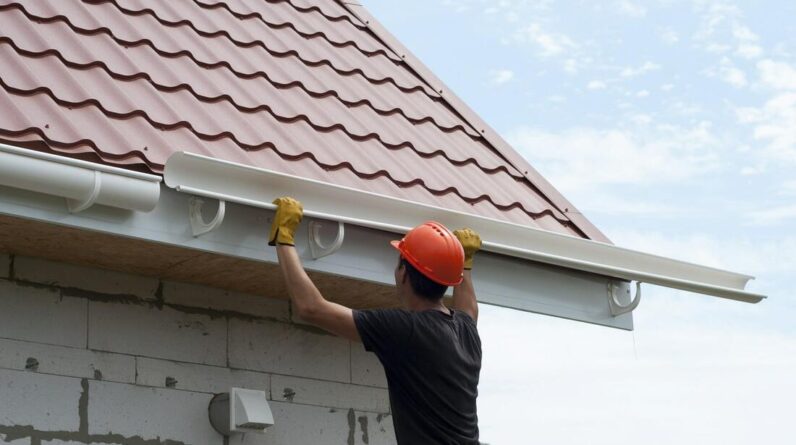To install septic tank risers, start by locating the septic tank lid and removing it. Then, position the riser over the opening and secure it in place using bolts or screws.
Septic tank risers are a crucial component of any septic system as they improve accessibility for maintenance and inspection purposes. By installing risers, homeowners can avoid the need to dig up the yard whenever the septic tank needs to be pumped or repaired.
We will provide a step-by-step guide on how to install septic tank risers effectively and efficiently. Whether you are a DIY enthusiast or prefer to hire a professional, this guide will help you understand the process and ensure proper installation. So, let’s get started on enhancing the functionality and convenience of your septic system by installing risers.
Septic Tank Risers: Why You Need Them
Septic tank risers are an essential addition to any septic system. They provide numerous benefits that make the installation process worthwhile. One of the key benefits is improved accessibility. With septic tank risers, it becomes much easier to access the tank for maintenance and pumping. This eliminates the need for digging up the ground each time, saving time and effort.
Risers also help to prevent damage to the tank and its components. By extending the access point to ground level, the risers act as a protective barrier, shielding the tank from accidental damage caused by heavy machinery, vehicles, or even tree roots.
Furthermore, septic tank risers promote regular maintenance and inspection of the system. The ease of access encourages homeowners to stay on top of their septic tank maintenance, reducing the likelihood of costly repairs and extending the lifespan of the system.
In conclusion, the installation of septic tank risers is a smart choice for any septic system owner. The benefits gained in terms of accessibility, protection, and maintenance outweigh the initial installation cost.
Understanding Septic Tank Risers
Septic tank risers are important components of a septic system that allow easy access to the septic tank for maintenance and inspection purposes. These risers are designed to extend the opening of the septic tank to ground level, eliminating the need for digging, which can be time-consuming and expensive.
Septic tank risers are cylindrical or rectangular structures made of durable materials like PVC or concrete. They are installed on top of the septic tank and rise above the ground surface. With the help of risers, homeowners can access the septic tank easily for pumping, cleaning, and other necessary maintenance tasks.
There are various types of septic tank risers available in the market, including PVC risers, concrete risers, and polyethylene risers. PVC risers are lightweight and easy to install, while concrete risers offer greater durability and strength. Polyethylene risers are known for their chemical resistance and affordability.
Step-by-step Guide To Installing Septic Tank Risers
Installing septic tank risers is a crucial step in maintaining your septic system. Before starting the installation process, there are a few important steps to consider.
Locating the septic tank: The first step is to locate the septic tank on your property. This can usually be found using a septic tank riser locator tool or by contacting your local septic system professional.
Excavating the area: Once you’ve located the septic tank, you’ll need to excavate the area around it. Carefully remove any soil or debris to expose the top of the septic tank.
Installing the riser: Next, position the septic tank riser over the opening of the septic tank. Ensure that it fits securely and snugly. Use adhesive or screws, if necessary, to secure the riser in place.
Securing the riser lid: After installing the riser, attach the lid securely to prevent any water or debris from entering the septic system.
Testing the installation for leaks: Finally, it’s important to test the installation for leaks. Fill the septic tank with water and check for any signs of leakage around the riser or lid. If any leaks are found, address them immediately to ensure the proper functioning of the septic system.
Maintaining And Caring For Septic Tank Risers
Maintaining and caring for septic tank risers is crucial to ensure the proper functioning of your septic system. Regular inspection and maintenance are key to prevent potential issues and costly repairs. Inspecting your risers periodically allows you to identify any signs of damage or leakage and take prompt action. It is important to clean the riser and lid to prevent clogs and blockages. Regular cleaning will prevent any buildup of debris, grease, or solid waste that can hinder the flow of wastewater.
Common issues that may arise with septic tank risers include cracks, leaks, and damaged fittings. Troubleshooting these problems promptly can help prevent any further damage to the septic system. Professional servicing is highly recommended to address any major issues or complex repairs. A trained technician can assess the condition of the risers, perform necessary repairs, and ensure the septic system operates efficiently.
Enhancing The Efficiency Of Septic Tank Risers
In order to enhance the efficiency of septic tank risers, there are several measures that can be taken. First, adding filters and alarms to the risers can help to prevent debris and solids from entering the tank, ensuring that it operates effectively. Additionally, incorporating riser extensions can be beneficial for deeper tanks, as it allows for easier access and maintenance. This is especially important for larger tanks, as it can be difficult to reach the bottom without the use of extensions. Lastly, insulating risers is crucial for colder climates, as it helps to prevent freezing and potential damage to the tank and system. By insulating the risers, the risk of costly repairs or replacements due to extreme temperatures is greatly reduced.

Credit: www.amazon.com
Frequently Asked Questions For How To Install Septic Tank Risers
How Much Does It Cost To Install Septic Tank Risers?
The cost to install septic tank risers can vary depending on factors such as the size of the tank and the location. On average, homeowners can expect to spend between $500 and $1,500 for professional installation. It’s important to get quotes from multiple contractors to ensure you’re getting a fair price.
How Long Does It Take To Install Septic Tank Risers?
The installation of septic tank risers typically takes a few hours. However, this can vary depending on the complexity of the job and any additional repairs or adjustments that may be needed. It’s best to consult with a professional installer to get an accurate estimate for your specific situation.
Can I Install Septic Tank Risers Myself?
While it is possible to install septic tank risers yourself, it is recommended to hire a professional for the job. Professional installers have the necessary tools and experience to ensure that the risers are properly installed and sealed, minimizing the risk of future issues with your septic system.
Do I Need To Hire A Professional To Pump My Septic Tank Before Installing Risers?
It is highly recommended to have your septic tank pumped before installing risers. This ensures that the tank is empty, making it easier and safer to work on. Additionally, it allows the installer to inspect the tank for any potential issues that may need to be addressed before installing the risers.
Conclusion
Installing septic tank risers is a crucial step in maintaining the functionality of your septic system. By following the step-by-step guide and using the right tools, you can safely and efficiently install risers. This simple yet important task will allow easy access for future maintenance and inspections, saving you time, money, and potential headaches down the road.
Take the necessary steps to elevate your septic system’s performance today.






